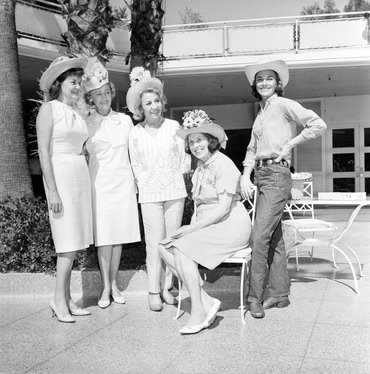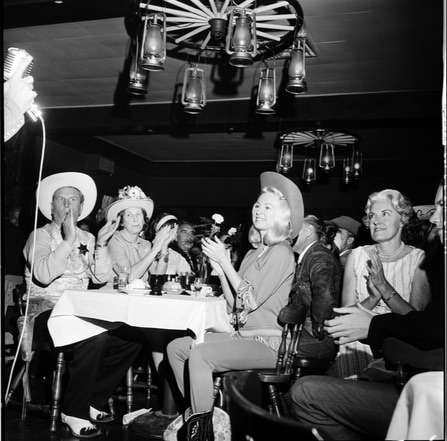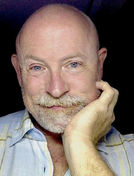Desert Mirage
 Socializing at the Ranch Club
Socializing at the Ranch Club
Trav Rogers came into Palm Springs in 1938. It was a sleepy town with a couple of inns and resorts where people "took the waters". Rogers built the Ranch Club stables out in the desert, at Vista Chino and Sunrise, rented out horses and taught many Palm Springs youngsters how to ride. LA celebrities quickly discovered the stables and women would come in, throw their coats and wraps on the table and go out riding. It quickly earned the nickname, "The Mink and Manure Club".
In 1955, developer Noel Clarke saw an opportunity and bought the Ranch Club and started building his vision. It soon had two nightclubs, 200 hotel rooms, swimming pools, tennis courts and of course the stables.
Clarke was ambitious and transformed the desert by expanding the Ranch Club with a 9 hole golf course, which he continued to enlarge. By 1959 it was only the second 18 hole course in Palm Springs. He also laid out streets and building lots in a square mile of sand and scrub, calling it Ranch Club Estates. He hired young building designer Hugh M. Kaptur to design ranch style homes that his Ranch Club Construction Company would build for its members.
In 1955, developer Noel Clarke saw an opportunity and bought the Ranch Club and started building his vision. It soon had two nightclubs, 200 hotel rooms, swimming pools, tennis courts and of course the stables.
Clarke was ambitious and transformed the desert by expanding the Ranch Club with a 9 hole golf course, which he continued to enlarge. By 1959 it was only the second 18 hole course in Palm Springs. He also laid out streets and building lots in a square mile of sand and scrub, calling it Ranch Club Estates. He hired young building designer Hugh M. Kaptur to design ranch style homes that his Ranch Club Construction Company would build for its members.
 Socializing in the Gay 90's Room at The Ranch Club
Socializing in the Gay 90's Room at The Ranch Club
Before his dream was fully realized, Clarke passed away in 1964. His widow Joyce sold the Ranch Club to new investors. They in turn sold it to developers and in 1972, Willam F. Cody designed condominiums were built along the fairways of the course. The small, original clubhouse was rebuilt and a larger structure with pro shop, restaurant and nightclub, also designed by Cody, was opened.
Today, as with all things that man builds in the desert, the golf course has been reclaimed, the sand fills the tennis courts, and the sounds of Count Basie, Duke Ellington and Liberace seem but a mirage. The lake has dried up and the seventies condos face fairways filled with desert sand and greens overtaken by native shrubs. Even the Cody designed clubhouse is gone and the cement slabs are hardly recognizable.
Today, as with all things that man builds in the desert, the golf course has been reclaimed, the sand fills the tennis courts, and the sounds of Count Basie, Duke Ellington and Liberace seem but a mirage. The lake has dried up and the seventies condos face fairways filled with desert sand and greens overtaken by native shrubs. Even the Cody designed clubhouse is gone and the cement slabs are hardly recognizable.
 Artist/Historian Michael DeJong
Artist/Historian Michael DeJong
Palm Springs Preservationists and historians know about the Tennis Club (extant) and the Racquet Club (sadly also closed) and of course the ranch counterpart at the south end of town - The Smoke Tree Ranch. But no one knows the history of what was once the largest, busiest social club in town. What happened? How come there are very few photographs? Why was a Cody designed building unceremoniously torn down? When did the Ranch Club get swept under the rug?
Join Palm Springs Artist & Historian Michael DeJong as he goes back in time and explores the history of The Ranch Club with those who played there, those who performed there and those that brought it to life.
Join Palm Springs Artist & Historian Michael DeJong as he goes back in time and explores the history of The Ranch Club with those who played there, those who performed there and those that brought it to life.
